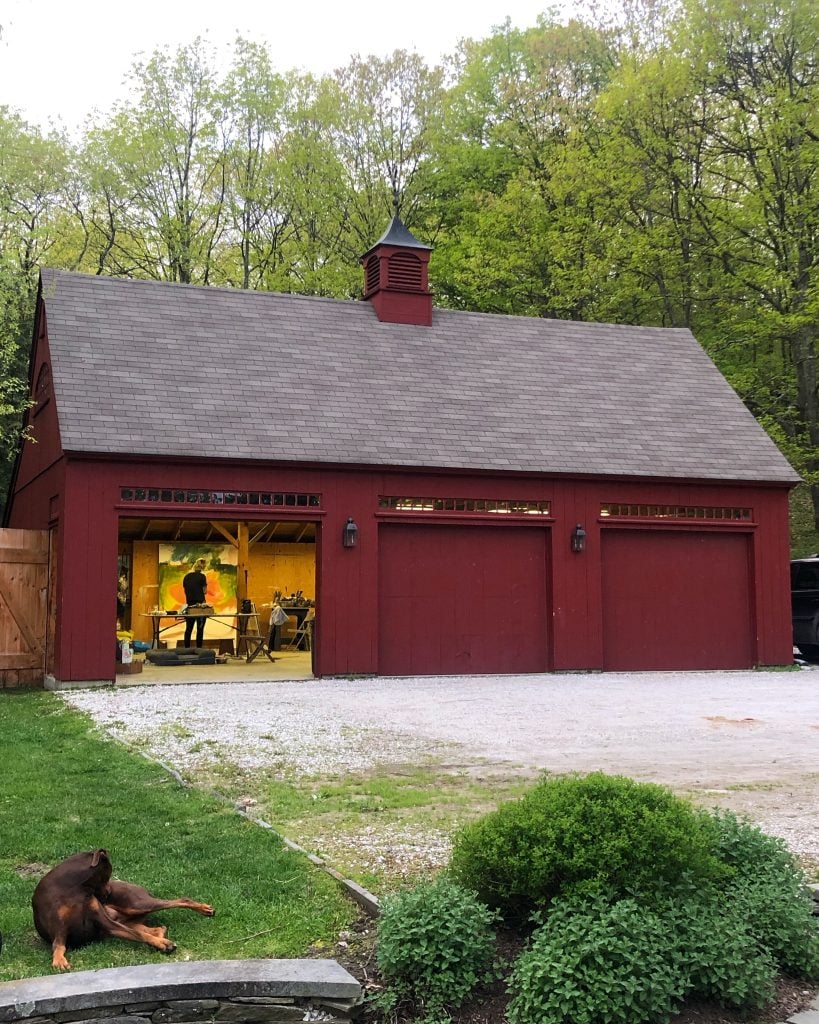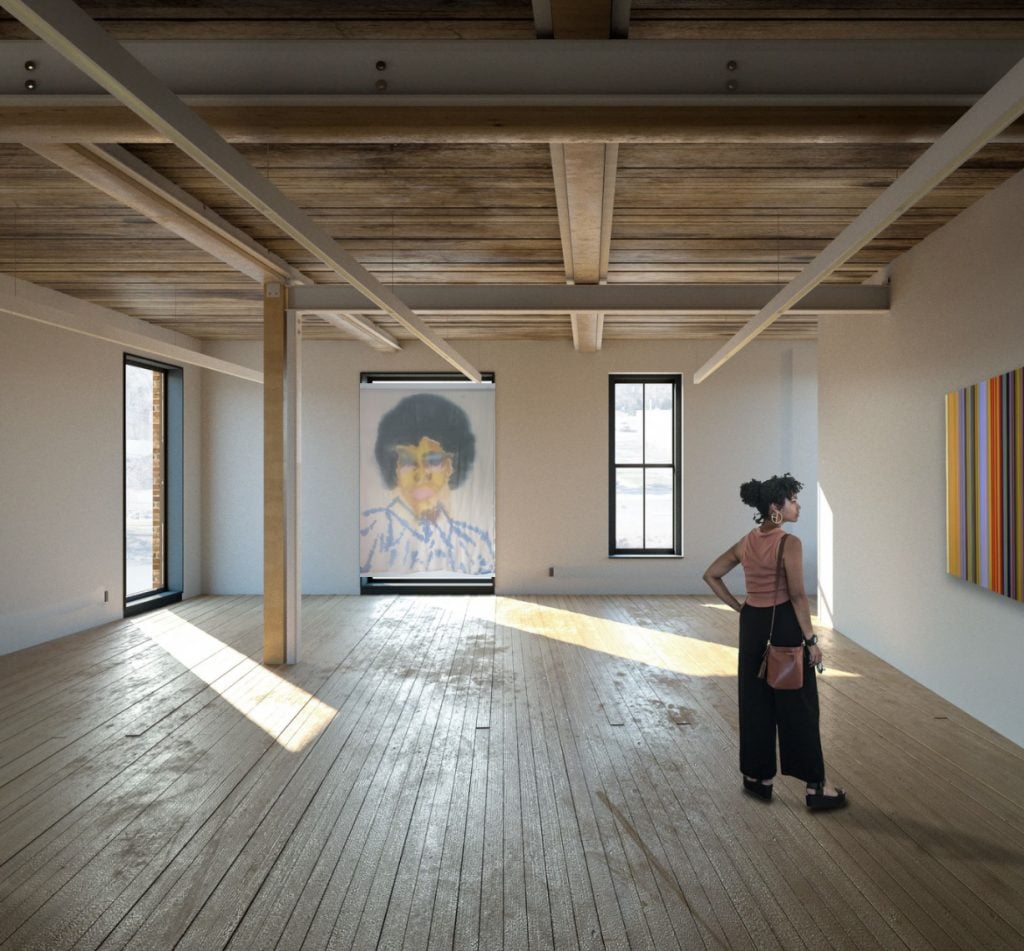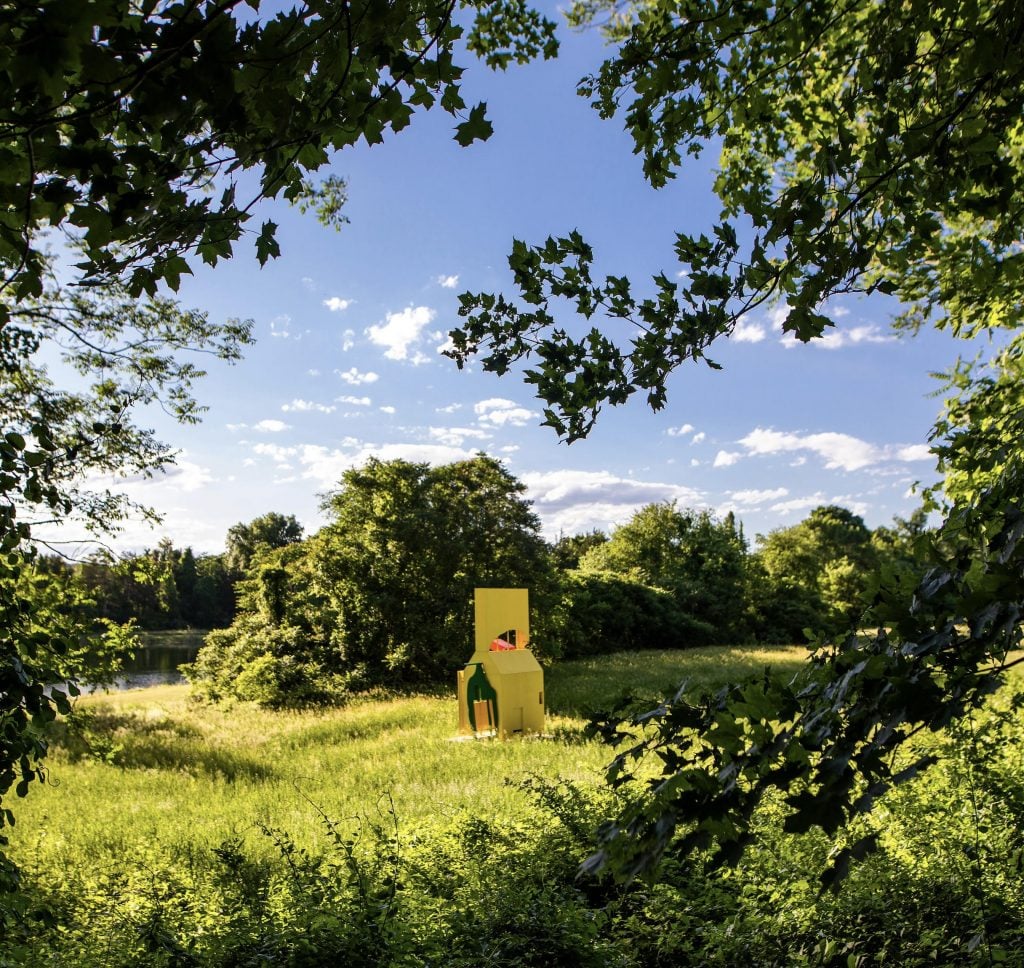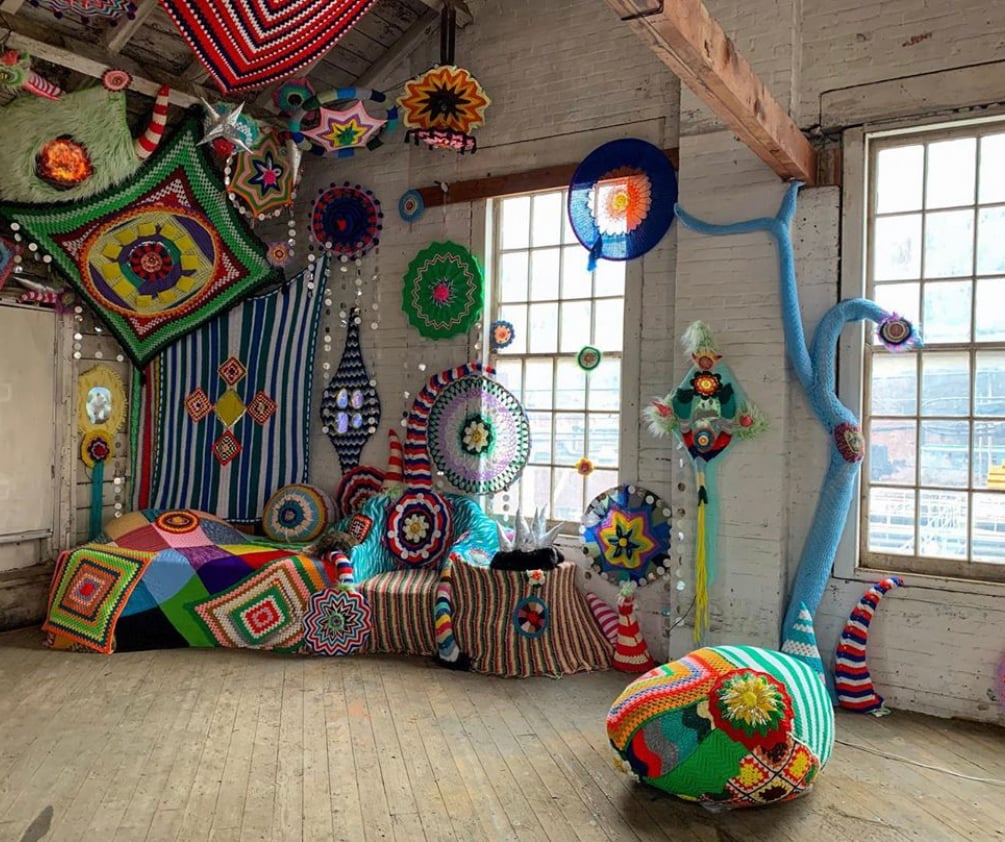Artnet News Pro
‘We Are Working to Build an Intentional Arts Community’: How the Hudson Valley Is Cementing Its Position as New York’s Friendliest Art Hub
Some 60 art spaces participated in the second-annual Upstate Art Weekend.

Some 60 art spaces participated in the second-annual Upstate Art Weekend.

Julie Baumgardner

In its second year, New York’s premier countryside art gathering, Upstate Art Weekend, seems to have gained traction.
With more than 60 participants, as well as local businesses onboard to support, the regional dot-connector of galleries, institutions, and arts spaces was primed to take shape nicely when it opened on Friday. But even its founder, Helen Toomer, who runs the Catskills mountain residency StoneLeaf Retreat with her husband, was surprised when 250 people showed up for her space’s inaugural event. (Including one New York State Trooper who showed up to poke around.)
Stoneleaf Retreat isn’t exactly on the main drag in Hudson or Poughkeepsie, so it would seem the secret is out: Upstate Art Weekend is a thing, and its neighbors have taken notice.
Stoneleaf wasn’t the only venue inundated with crowds. Foreland Catskill launched the weekend with a 100-artist show (from 81 participating galleries), organized by the New Dealers Art Alliance (NADA) and curated by JAG Projects. When 5,500 visitors walked through the doors, it “blew everything we expected out of the water,” said a representative for the Catskill contemporary art complex.

Dana Robinson work at NADA x Foreland.
“We had an incredible turnout from Friday to Sunday,” said dealer Alexander Gray of his Germantown gallery. “I saw people I was not expecting to see, from collectors to art advisers to artists. It ran the gamut.” Meanwhile, the perpetually energetic artist and gallerist Liz Nielsen and her partner Carolina Wheat, who together run the Elijah Wheat Showroom in Newburgh, remarked, “We were busy all weekend. Guests kept coming until 7 p.m. every night!”
While “big crowds” may be a relative term upstate—this wasn’t Alexander McQueen at the Met or Kusama at David Zwirner, after all—the event is also free of Hamptons-style traffic and the drama of New York City VIP lounges and galas. There was a sense of momentum—not mayhem—upstate this past weekend, where instead of jetset signifiers there were well-attended openings, a bash or two, and a bevy of projects, experiments, and experiences in atypical settings. (Not that there weren’t a few art advisers with expensive handbags and Brooklyn artist types in attendance too.)
“The vibe is a community-centered event, one of exchange, creativity, relationships and conversations,” said Gray.
Dolly Bross Geary, who opened a Millerton outpost of her Lower East Side operation Geary last August, added: “All the things that people say about upstate are true.”

Nick Cave’s Chaplet at the Thomas Cole National Historic Site.
“Upstate,” which if its vast coordinates still pose confusion, consult this map for guidance, is not just a pandemic phenomenon. The history of art and artists is long in the Hudson Valley, and the current art scene is shaping up to be a third wave of the movement, or what was once called “a school.”
The first, of course, is the Hudson River School, with artists such as Thomas Cole and Frederic Edwin Church. The second is the artist colonies of the 1960s and ‘70s, including Brydcliffe and Archipenko School. What’s happening now began to materialize in the “before times,” but in these almost two-year “unprecedented times” has exceeded most expectations.
While plenty of blue-chip collectors have second (or third) residences in the Hudson Valley, many dealers say the most vibrant collecting base is operating at the lower levels of the market.
“They’re not gonna spend six or seven figures on anything,” said Franklin Parrasch, who’s become a bit of an upstate art gadabout thanks to the gallery he runs in Beacon with Nicelle Beauchene, Parts and Labor, as well as his pop-up space in Kingston, Airfield, which he founded with Anna Gray (sister of Alex) and Artadia’s Carolyn Ramo. “Upstate, you can run a gallery on selling $5,000 art,” he said.
“Do I really want go to the Hamptons, which is further away, already packed with galleries, and more interested in commercially driven deals?” said Iliya Fridman, whose Lower East Side space Fridman Gallery set up shop this summer in Beacon. “The gallery was at a crossroads and looking to expand,” he said. “It doesn’t really add much to have a second space on the ‘same street’ [in New York City]. It’s much more interesting to talk to a new audience and see what the artist community is like and what they care about.”
“As you cross the palisades,” Fridman added, “the air changes, and the taste changes.”
Another new face around these parts is the Tribeca-based dealer Andrew Kreps. “Aspen or the Hamptons is really a different animal than upstate,” he said. “There’s a freedom to do things that are open to a wider audience. Whether it’s studios or galleries, you can just experiment.”
Now, Kreps and his downtown cohorts Anton Kern, Bortolami, and James Cohan, as well as Mexico City gallery Kurimanzutto, have joined forces to buy the former Ockawamick high school, built in 1952, in Claverack, New York. Each gallery plans to take a section for an outpost, as well as have a space for art storage.
“The idea of doing something outside the traditional New York thing feels pretty refreshing,” said Kreps. “It doesn’t need to be [competitive]. Together, this project feels like the sum of its parts are greater than one on its own.” (Expect a knockout showing come next spring or summer.)
Some new collectives and operations are actively “rejecting the white cube space,” said curatorial trio Big Paradise, whose first exhibition was at Katiushka Melo’s farm in Germantown. And near Hudson, a group of California transplants have created the mysterious Sunfair, which fuses outdoor sculpture with a working farm.
At the Elijah Wheat Showroom, which opened last July, “we’re putting together a program that’s risky, and it’s so current and contemporary,” said Carolina Wheat. “People are sniffing out, ‘what are they up to?’.” Cue the handbags seen around town.

Serban Ionescu work at Sunfair Farm.
Community is central to the momentum of the upstate art scene, and NADA’s exhibition at Foreland distinctly displays that sense of camaraderie. When curator Jesse Aran Greenberg, who also has a house-galley project in Hudson, went to Foreland to meet Stef Halmos, the complex’s creator and operator, he immediately turned around to approach NADA about aligning a show during Upstate Art Weekend. When NADA agreed, “Stef basically said, ‘here are the keys,’” Greenberg said.
The former mill was all but a shell of a space when Halmos acquired it in 2017, and it now houses 30 artist studios (current residents include Shara Hughes, Lyle Ashton Harris, and Marc Swanson).
“Much of the art market and fairs are painting,” Greenberg said. “But Foreland doesn’t have a lot of wall space,” so the NADA show instead focuses on sculpture and objects. Standout participants include Courtney Puckett (JAG Projects), Rachel Mica Weiss (Carvalho Park, New York), and Carl D’alvia (Hesse Flatow).
“The real problem I had with the art world was this industry of exclusion,” said Halmos. “We really are working to build an intentional arts community. This place has to be special, but it also has to be for everyone.”

Jeila Gueramian work at ArtPort Kingston.
So what happens after NADA moves out this week? The artists’ studios will remain a place for convergence and community, which is also the mission of the many residencies that are opening in the area, including Forge Project, River Hill Residency, and KinoSaito, a magnificent new arts center in Verplanck, right on the Hudson River, dedicated to the work of Kikuo Saito.
“It’s just connecting the dots and celebrating what’s going on, by building community and making connections,” said StoneLeaf’s Helen Toomer.
So, will it last? “Upstate is a utopia in general, but it’s going to take time,” Parrasch said of the local market.
Perhaps the most compelling clue to the Hudson Valley’s bid for longevity is its reputation as a place for discovering new artists and artistic activity.
“We think there’s a future for a lot of things upstate, but certainly fairs will have a deeper new life as more people embrace the idea that ingenuity is not limited to the closest biggest city,” said Andrew Gori, co-founder of the roving art fair Spring/Break, which just held an “Upstate Immersive” of nine sculptural commissions in Poughkeepsie’s Dongan Park. “More exciting initiatives are bound to emerge as those who care about decentralized art ecosystems, who want to show, acquire, and financially support those ideas, live in those areas.”